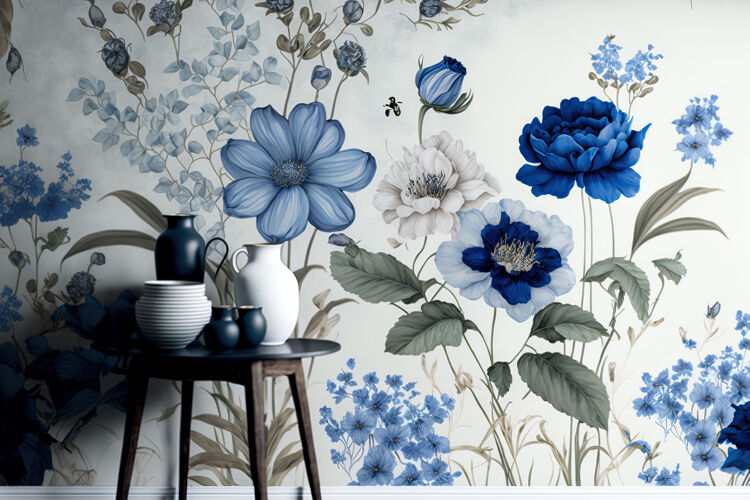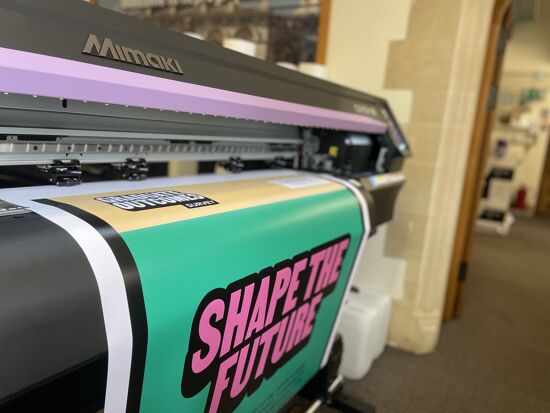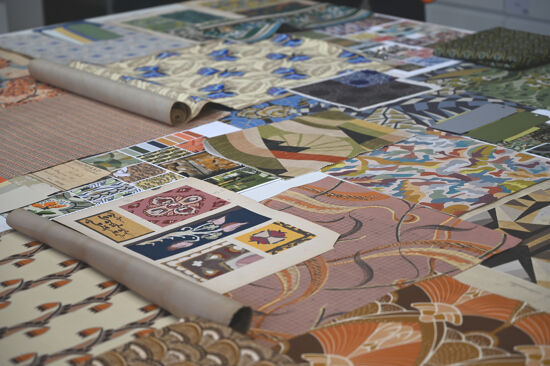The Growth of Digitally Printed Wallcoverings: Key Trends and Opportunities for Personalisation

The digitally printed wallpaper market is experiencing rapid growth, projected to reach $12.25 billion by 2030, driven by demand for personalisation and sustainable options. Advances in inkjet technology enable vibrant, custom designs for residential and commercial spaces. Key trends include bespoke decor, eco-friendly materials, data-driven design, and industry collaborations, presenting significant opportunities for design and print professionals.
The digitally printed wallpaper market has been growing at a phenomenal pace, with the global value expected to soar from $4.94 billion in 2024 to $12.25 billion by 2030, reflecting an impressive CAGR of 15.98% [Research and Markets]. This rise presents an unparalleled opportunity for professionals in the design, printing, and Interior Decor industries to tap into a market fuelled by rapidly advancing technology, increased consumer demand for personalisation, and a heightened focus on sustainability.
This article explores the driving forces, market insights, and commercial opportunities within the digitally printed wallpaper sector.
Why Digitally Printed Wallcoverings are Revolutionising Interiors
Digitally printed wallcoverings represent the crossroads of design and technology. Once limited to traditional manufacturing process, creating mass-produced patterns, wallpaper design has undergone a digital transformation, enabling customisation, faster turnaround times, and reduced production waste.
Advances in printing technology like UV-cured and water-based pigment inkjet systems have redefined what’s possible. These innovations allow for ultra-high print resolution, vibrant colours, and durable finishes that can cater to a growing demand for unique, visually striking designs. This not only broadens creative possibilities for product and interior designers but also caters to consumer expectations for personalisation and a unique aesthetic for their interiors.
A Push for Customisation and Eco-Friendliness
Today’s consumers want their walls to stand out, and digital wallcoverings deliver just that. With bespoke designs, intricate printed 3D surface effects, patterns, and tactile materials the appeal is undeniable. From homeowners to retail and corporate offices, customised designs are making their way into every corner of the market.
Increasing pressure to adopt eco-friendly and sustainable practices has driven innovation. Using non-toxic, eco-friendly inks and recyclable materials contributes to reduced environmental impact, making digital wallpapers a more sustainable choice for modern interior design.
Exploring Untapped Market Segments
The scope for growth within the digitally printed wallpaper market goes beyond the obvious. By understanding key segmentation insights, stakeholders can identify niche opportunities to maximise revenue streams.
By Material
Materials such as textiles, organic fibres, nonwoven, paper, fibreglass, and vinyl and recycled materials allow for varied applications across both residential and commercial spaces. Fibreglass and vinyl, for instance, are particularly popular within high-traffic spaces such as hotels and retail stores, due to their durability and easy maintenance.
By Design Pattern
Customisation reigns supreme, with demand surging for personalised designs. Abstract, floral, geometric, scenic murals, and graphic prints are among the more popular categories, attracting different demographics and allowing designers to offer tailored solutions whilst expressing their creativity.
By End-Use
Digitally printed wallpapers are no longer confined to residential spaces. Commercial applications, such as healthcare facilities, retail stores, and office spaces, present significant opportunities. Similarly, in the entertainment industry, cinemas, theme parks, and stadiums leverage custom designs to create immersive environments.
By Distribution Channel
Online platforms are thriving and have emerged as essential sales channels, expanded market access and providing consumers with customisation options at their fingertips. Offline stores, like the Sanderson Design Group are increasingly relevant, and are expanding to offer design archives as bespoke touchpoints to enrich the customer experience.
Key Regional Trends
Examining global demand reveals how region-specific consumer behaviours shape growth [Research and Markets].
- Americas - A strong focus on bespoke interior design continues to fuel consumer interest in the United States and Canada. With vibrant design sectors, these regions further amplify the demand for high-quality wallpaper.
- Europe, Middle East & Africa - This market benefits from a blend of traditional aesthetic sensibilities and modern digital capabilities. Heritage-inspired wallpaper patterns are re-imagined with cutting-edge technologies, appealing to both homeowners and premium commercial projects such as boutique hotels.
- Asia-Pacific - This region offers the fastest-growing market due to rapid urbanisation, industrialisation, and an expanding middle class. The desire for personalised and innovative designs is spurring demand among homeowners and office spaces, particularly in China and India.
Digital Technology Delivers Precision and Sustainability
As the wallcovering market expands there are a plethora of printing technologies and each uniquely determine the quality, speed, and environmental impact of digitally printed wallpapers produced. Inkjet Printing - Both Flatbed and Roll to roll, has emerged as the favoured technology due to its low setup costs and adaptability, inkjet systems such as UV-cured and water-based methods support brilliant colour reproduction and eco-friendliness.
These innovations bring an essential mix of precision and scalability to the industry, allowing companies to stay competitive while meeting the sustainability requirements of eco-conscious clients.
Market Trends Creating Opportunities
The trajectory of the digitally printed wallpaper market signals several trends that professionals in the Interior Decor and printing industries cannot afford to miss.
- Growth of Personalised Decor
- Sustainability as a Defining Factor
- Integration of Data Analytics
- Collaborative Design Ecosystems
Partnerships between wallpaper manufacturers, surface pattern, interior designers, and retailers are vital. These collaborations foster the development of innovative collections, delivering brand loyalty, additional revenue and seemingly infinite creativity.
A Thriving Future for Digitally Printed Wallcoverings
The digitally printed wallpaper market presents a golden era for growth, creativity, and innovation. For Interior designers, surface pattern design studios and print providers, it is not merely a trend but an evolving extension of their craft.
Those who position themselves as early adopters of cutting-edge printing technology and offer customer-centric, sustainable solutions will solidify their foothold in this lucrative space.
Discover the latest innovations in interior decor at FESPA Global Print Expo 2025, Europe's leading print and signage exhibition taking place from 6 - 9 May at Messe Berlin, Germany. It will showcase the most innovative products, visionary concepts, and latest developments in the future of print. Register to visit here.
Discover the latest innovations in personalisation at Personalisation Experience 2025, a premier gathering dedicated to unveiling the latest in digital print personalisation. Taking place from 6 -9 May at Messe Berlin, Germany. Register to visit here.
Recent news

Industry Insights, Design Trends and Disruptive Innovations for Interior Decoration
Debbie McKeegan shares key trends and innovations in the interior decoration industry taking place and demonstrated at recent European exhibitions in Germany and France. The interior decoration industry is adapting to challenges like overstock and supply chain disruptions by integrating digital and traditional methods, aiming for more agile and environmentally friendly solutions.

Bridging Design and Technology: The Story of Western Sensibility an interview with Kathryn Sanders
In this podcast episode, Debbie McKeegan interviews Kathryn Sanders, the CEO & founder of Western Sensibility, a US based company that merges interior design with digital printing technology. They discuss the origins of the business, its innovative services, and the importance of sustainability in the textile industry.

How to choose the right machine for indoor print
With interior print one of the stand-out growth areas of the industry in recent years, it is crucial printing companies select the right equipment to achieve the best quality results. Here, Rob Fletcher picks out some of the machines best suited to this work.

Resilience, Innovation and Heritage: The 100-Year Journey of the Standfast & Barracks
Renowned textile printing facility, Standfast & Barracks celebrates 100 years who are known for their expertise in rotary, flatbed and digital printing techniques. Debbie McKeegan looks at the history of the company and speaks to Lisa Montague, Managing Director about how they have adapted over the years and their future plans.